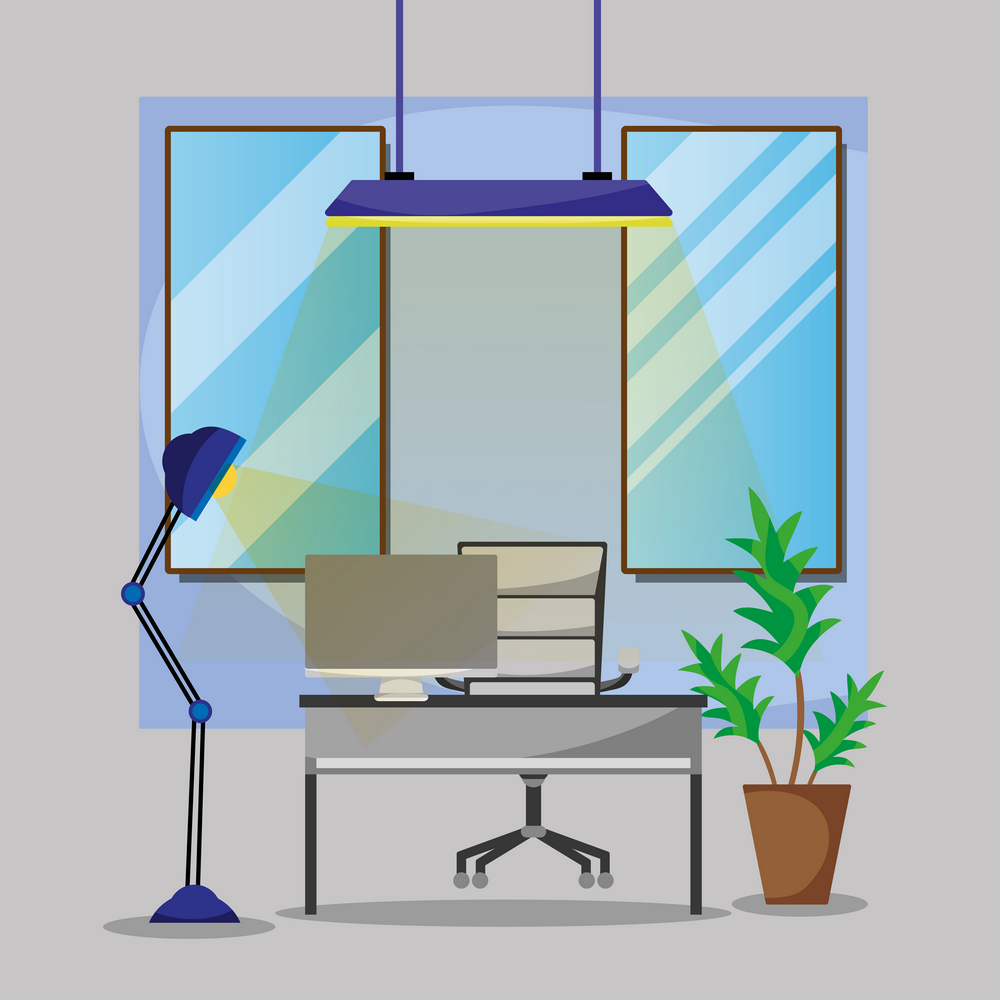This office lighting guide breaks down everything you need to know to choose the right lights for productivity, comfort, and style.
Whether it’s a home office or business space, get simple tips to brighten your workspace the smart way.
Know Your Lighting Types
- Ambient lighting: This is your general overhead light. It sets the overall brightness of the room.
- Task lighting: Focused light used for work areas like desks or reading corners. Desk lamps are a common example.
- Accent lighting: Adds depth or style, such as wall sconces or LED strips. These are optional but useful for visual interest.
Pick the Right Brightness and Color
- Brightness (Lumens): For a home office, aim for around 3,000 to 6,000 lumens total, depending on room size. Task areas like desks may need brighter, focused lighting.
- Color Temperature (Kelvin): Office lighting works best in the 4000K to 5000K range. This gives off a cool white light that helps with focus and reduces eye strain.
- Warm vs Cool Light: Warm light (2700K to 3000K) feels cozy but may be too soft for focused work. Cool white light is crisper and better for productivity.
According to a study, offices perform best with lighting between 4000K and 5000K, which promotes alertness and focus
Plan Your Light Placement Smartly
- Avoid glare on screens: Position overhead lights so they don’t reflect directly onto monitors. Use adjustable task lamps to aim light where it’s needed.
- Layer your lighting: Use a mix of ceiling lights for general coverage and desk lamps for focused tasks. This creates balanced, flexible lighting throughout the day.
- Use natural light when possible: Place your desk near a window but not directly facing it. This lets you benefit from daylight without dealing with glare.
Save Energy Without Sacrificing Quality
One of our clients reduced their energy use by 35% after switching to LED panel lights with occupancy sensors.
- Choose LED bulbs: They use up to 80% less energy than traditional bulbs and last much longer. Look for ENERGY STAR certified options for the best efficiency.
- Use task lighting wisely: Instead of lighting the whole room, turn on focused lights only when you need them. This reduces power use without compromising visibility.
- Consider dimmable fixtures: Adjust brightness based on time of day or task. This adds flexibility and extends bulb life.
- Try smart lighting: If you like tech, use smart bulbs or plugs to schedule lights or control them remotely. This is helpful for businesses with set hours or multiple rooms.
Conclusion
Take a moment to look around your space.
Is your lighting helping you or holding you back?
Back to office interior design guide
Explore Related Topics
- Office Design Trends









0 Comments